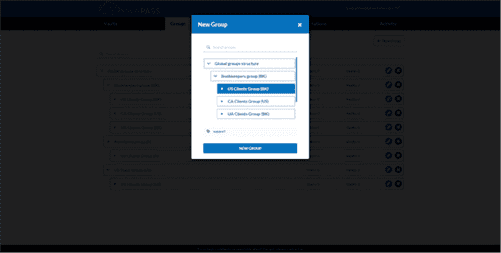The Ultimate Guide to DORA Metrics
Or, if you intend to retire a product, you’re likely to reduce the development frequency as you’ll no longer make improvements or introduce new features – only resolve critical issues. If you use the metrics to assess software developers, you’ll take your team back to skill-based silos where they have conflicting goals. Though performance clusters from the annual report are useful to see how you compare to the industry, your goal isn’t elite performance. Instead, look at what your cross-functional team aims to achieve and set an appropriate ambition for their performance. You can deploy more often by reducing batch size and automating the deployment pipeline.

These and several other reasons make it almost impractical to build your own solution to extract metrics that can drive meaningful change in the organization. Time to recovery or time to restore service essentially measures how long it takes a DevOps team to restore service when a service incident or a defect impacts customers; for example, an unplanned outage or service impairment. In this post, we present a methodology to collect these four https://www.globalcloudteam.com/ metrics from software delivery pipelines and applications deployed in Google Cloud. You can then use those metrics to rate your overall practice effectiveness, and baseline your organization’s performance against DORA industry benchmarks, and determine whether you’re an Elite, High, Medium or Low performer. Next up is the change failure rate, or, simply stated, a measurement of the percentage of deployments that cause failures in production.
GitLab’s 3 steps to optimizing software value streams
A valuable way to use deployment frequency in your organization is to track the number of weekly deployments per developer. Using per-developer numbers helps you see problems as you scale and manage expectations when a developer leaves. If you have manual tasks in your deployment pipeline, people will try to reduce how often they perform them. This affects deployment frequency, increases batch size, and makes the manual task a bigger effort. Reducing deployment frequency makes batches larger, which makes deployments even more difficult.
Interestingly, elite, high and medium all have a change failure rate of 0-15% while low performers have a change failure rate of 40-65%. Change failure rate is the percentage of changes that resulted in degraded services, like service impairment or outage, and need to be fixed. Change failure rates essentially highlight the efficiency of your deployment process. Within the DevOps world, you want to strive for “continuous” development and this in itself implies a high deployment frequency.
How change failure rate is calculated
Heterogeneity adds another layer of complexity as data from other tools now have to be fed into Power BI and analyzed. This means more API calls, data modeling, query building, and other steps for each such tool. To ensure a fully functional reporting system that adheres to the enterprise standards one essentially needs to build another RBAC type layer on Power BI to control visibility and access as per the company policy. Here are two key limitations why this functionality must essentially be built on Power BI. A primary limitation to easily extracting DORA metrics such as Lead Time to Change and Deployment frequency is that Analytics Views does not support data types such as Azure Pipelines and Tests.
Measuring Change Failure Rate means measuring code quality, and this is a crucial point to cover when it comes to DevOps teams’ performance. You can use the 5 metrics to determine software delivery and operational (SDO) performance. Instead, the groups reflect an appropriate level of performance based on a classification of the software system. However, the State of DevOps Report found the operational capability of reliability drives benefits across many outcomes. Reliability refers to teams prioritizing meeting or exceeding their reliability targets.
Support for Server products ends February 15, 2024
The four metrics used are deployment frequency (DF), lead time for changes (LT), mean time to recovery (MTTR), and change failure rate (CFR). In Agile, DORA metrics are used to improve the productivity of DevOps teams and the speed and stability of the software delivery process. DORA supports Agile’s goal of delivering customer value faster with fewer impediments by helping identify bottlenecks. DORA metrics also provide a mechanism to measure delivery performance so teams can continuously evaluate practices and results and quickly respond to changes.

To have lower mean time to recovery, practice continuous monitoring and prioritize recovery with emergency incident response plan when a failure happens. Waydev’s DORA metrics solutions enable engineering managers to align software velocity and quality goals. Understand the modern approach to practicing devops dora metrics chaos engineering where the efforts to build resilience are inserted into all stages of your software development life cycle through automated chaos experiments. Harness Chaos Engineering or Harness CE comes with all the building blocks required for achieving Continuous Resilience in DevOps.
Effective DevOps
The main task of the service management model is to provide assistance to the main business model in obtaining the final results. There is a need to introduce uniform basic quality standards for the provision of IT services for the cross-border digital space. The main goals of a self-regulatory organization in the field of IT should be the development of an agreed definition, classification, and parameterization of a dedicated set of digital services in the regulatory environment.

Data-backed decisions are essential for driving better software delivery performance. DORA metrics give you an accurate assessment of your DevOps team’s productivity and the effectiveness of your software delivery practices and processes. Every DevOps team should strive to align software development with their organization’s business goals. Mean Lead Time for Changes (MLTC) helps engineering leaders understand the efficiency of their development process once coding has begun. This metric measures how long it takes for a change to make it to a production environment by looking at the average time between the first commit made in a branch and when that branch is successfully running in production. It quantifies how quickly work will be delivered to customers, with the best teams able to go from commit to production in less than a day.
performance groups
Bookmark these resources to learn about types of DevOps teams, or for ongoing updates about DevOps at Atlassian. You can also send out alerts through a variety of channels, allowing you to integrate into existing ticketing or messaging systems to record the MTTR in a way that makes sense for your organization. For our purposes we integrate with the Pub/Sub message bus channel, sending the alerts to a cloud function that performs the necessary charting calculators. Join the Ship It Club to receive updates on development trends, productivity tips, and gain early access to DevCycle events and giveaways, shipped once a month. Accelerate is a book written by the co-founders of DORA, Dr. Nicole Forsgren, Gene Kim, and Jez Humble, who wanted to summarize their four years’ worth of research findings into one paper.
- When you need a code change to resolve a fault, your lead time will factor in the recovery time.
- The researchers also wanted to come up with a model that would identify the specific capabilities teams could leverage in order to improve software delivery performance in an impactful way.
- When tracked over time, this metric provides great insight as to how much time is spent on fixing errors and bugs vs. delivering new code.
- Sometimes these bugs are minor, but in some cases these can lead to major failures.
- DORA supports Agile’s goal of delivering customer value faster with fewer impediments by helping identify bottlenecks.
This is a very common cause of heterogeneity, which makes it difficult for the acquirer to get a better understanding of the development metrics. Bringing in this data to understand the output of outsourced teams creates new sources of discontinuity in the process of measuring DORA metrics and other engineering metrics. And, third party tools such as Jenkins for CI-CD also introduce heterogeneity in the toolchain.
Features View All
This means not only an absence of service level agreements (SLAs) but also the emergence of various service issues that can jeopardize business-critical services. The Mean Time to Recovery (MTTR) measures the time it takes to restore a system to its usual functionality. For elite teams, this looks like being able to recover in under an hour, whereas for many teams, this is more likely to be under a day. As a proven and widely accepted methodology, DORA metrics are a useful starting point for understanding your company’s current delivery levels and how you compare to others in the industry. While DORA metrics are relevant for any company delivering or developing software, it’s most commonly used within technology, financial services and retail/ecommerce industries. Deployment frequency looks at how often an organisation deploys code to production or releases to end-users.
![]()
